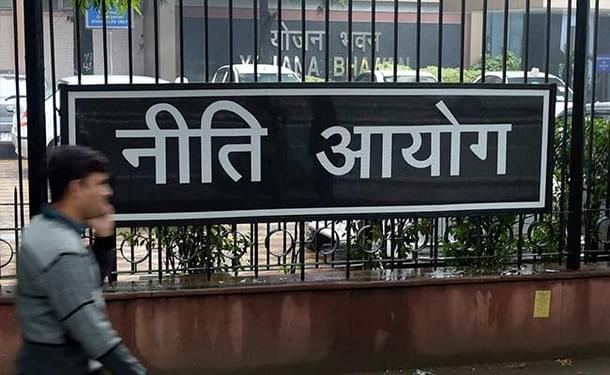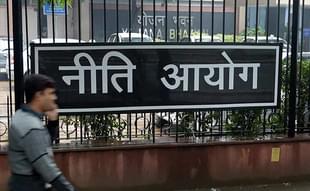Ideas
Coastal Jobs Zones And Urban Revival Key Elements in NITI Aayog’s Three-Year Action Agenda
R Jagannathan
May 04, 2017, 02:31 PM | Updated 02:31 PM IST
Save & read from anywhere!
Bookmark stories for easy access on any device or the Swarajya app.


A few days ago, NITI Aayog, or the National Institution for Transforming India, Prime Minister Narendra Modi’s replacement for the Planning Commission, produced what it called a three-year Action Agenda (2017-20). This agenda is supposed to dovetail into a 15-year vision document and a seven-year strategy statement that are also under preparation.
Duh? Is the replacement for Soviet-style five-year plans with 15-year visions and seven-year strategies and three-year action agendas worth the replacement of Planning Commission with NITI Aayog? Makes one wonder why the Planning Commission was even abolished. Wasn’t the whole of NITI Aayog supposed to be about doing the doable, and throwing up ideas for enabling change in the shortest possible time?
Government bodies are nothing if not unending report generators, and NITI Aayog probably could not avoid the trap. Luckily, the shock wears off fast. If the three-year Action Agenda is anything to go by, it seems more focused than the tomes released for our five-year plans, which often got finished only after half the plan period was over. Luckily, the Action Agenda comes just at the start of the three-year period. It is thus of some use.
Rather than produce more vision and strategy documents, maybe rolling three-year Action Agendas are better, especially if they can take stock each year and make quick changes in the actions recommended based on experience.
The Action Agenda, which runs to 184 pages and 24 chapters, focuses on seven areas – revenue and expenditure budgets, economic transformation, regional development, growth enablers, government and taxation, social sectors, and sustainability. (Read the Draft Action Agenda here)
Clearly, these sections did not happen purely by accident: many of them follow from some of the themes outlined by the Prime Minister, with “doubling farmers’ incomes” being a promise that figures under the head “economic transformation of major sectors”, “smart cities” getting a look-in under “urban development”, “digital connectivity” featuring under “growth enablers”, and “education and skill development” under “social sectors”, among other things.
The main merit of the Action Agenda, apart from the wealth of data and ideas it provides, comes from the fact that it is politically attuned to the way Modi thinks, and the agenda for 2017-20 thus neatly fits into the next Lok Sabha electoral timeframe.
The best plans are evolved in the context of good politics, and that is why we need to give the Action Agenda reasonably high marks. It is not something that some macro-economists and number crunchers dreamt up by sitting in rarefied chambers and ivory towers. Many of its solutions thus do not talk of the ideal, but the doable.
Take jobs, political and economic priority No 1 for the Modi government, which was elected on the promise of achche din.
The agenda has some good ideas for creating them. It emphasises that the problem is not mass unemployment, but mass underemployment where people have jobs, but only low-paying, low-skill, low-productivity ones. The report says that underemployment can be combatted only through the creation of better-paid formal sector jobs. Contrary to former Reserve Bank of India governor Raghuram Rajan’s suggestion that Modi’s ‘Make in India’ cannot reasonably presume the possibility of export-led growth, and that the slogan should be ‘Make for India’, Arvind Panagariya’s NITI Aayog has the exact opposite prescription: the agenda clearly says that the only four developing countries to transform themselves in three decades were all export-led: South Korea, Taiwan, Singapore and China. Thus India can hardly hope to create worthwhile formal sector jobs without a major export push.
While the global environment for exports is hardly as conducive for India now as it was for the four countries mentioned in the second half of the last century, India does have some favourable tailwinds, including rising Chinese wages, which may help companies relocate their labour intensive jobs here.
The agenda thus advocates the creation of Coastal Employment Zones (CEZs) – one on the east coast and another on the west – covering 500 square kilometres each, including some existing habitations. It does not suggest where these CEZs should come up, but Gujarat and Maharashtra are obvious candidates for the west, and Andhra Pradesh in the east.
The agenda seeks labour reforms, but the doable reform it seeks is to replace contract labour with fixed term employment, which is being allowed in textiles and apparel but can now be extended to all industries. A fixed-term employment is also a contract, but it is a regular job with a termination date, and not just something that can be ended arbitrarily by the employer. Jobs aren’t being created because employers prefer to invest in automation to avoid an excessive complement of labour protected by rigid laws. The fixed-term employment contract hopefully will enable companies to expand their labour intake.
The sectors where the agenda sees huge scope for labour-intensive manufacturing are apparel, electronics, food processing, gems and jewellery, financial services, tourism and culture and real estate.
A related subject is urban development, which too is key to soaking up the surplus labour from over-burdened farms. Urban development holds the key to both jobs and growth in future, but the agenda rightly notes that this needs investments in urban housing, which cannot take off without cheap land supplies.
The agenda offers four suggestions for increasing supplies of land: speeding up litigation of land entangled in legal disputes, using the land already owned by sick public sector units, and freeing up land owned by the railways, defence and civil aviation ministries. The real solution is to amend the UPA-era Land Acquisition Act, which makes land acquisition prohibitively expensive for building affordable housing, but that seems unlikely as long as the government does not have a Rajya Sabha majority.
But perhaps the biggest constraints on land are land use conversion rules and flawed building laws that restrict vertical growth in cities. Many state governments allow high-rises and vertical growth only in the suburbs, which increases problems with commuting. The logical thing to do is to increase FSIs (floor space indices) in city centres, which both reduces commuting and slums.
The report points out that in 1984, Shanghai had an average of 3.65 square metres of space per person; today, by a relaxation of building laws and higher FSIs, it has 34 sq m. Mumbai has just 4.5 sq m, thanks to counter-productive laws.
The report deals with several other subjects, but clearly, there is much value in terms of actionable reforms for the government in the Action Agenda. If the government just focuses on those that create good jobs, the exercise would have been more than worth it.
Jagannathan is former Editorial Director, Swarajya. He tweets at @TheJaggi.





